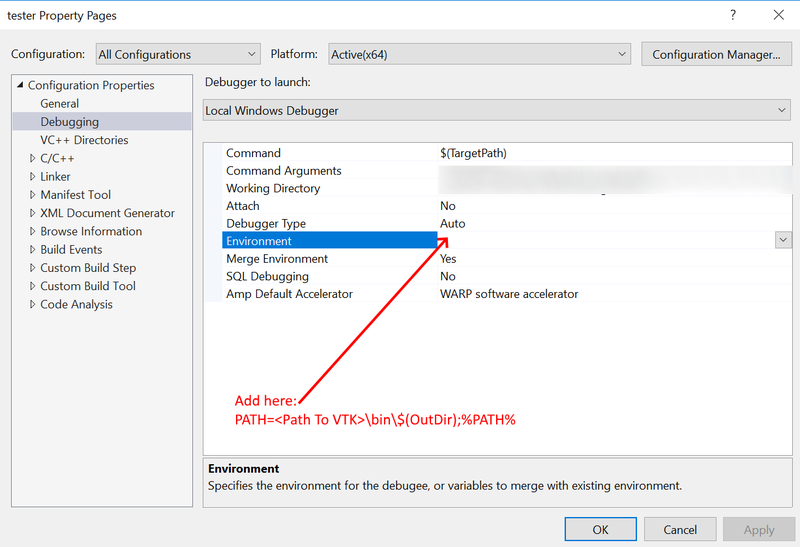Sdl Runtime Library Mac
Download SDL.NET Runtime for free. SDL.NET Runtime - SDL.NET is a set of object-oriented.NET bindings for the SDL gaming library and provides high-level access to audio, keyboard, mouse, joystick, TTF fonts, various image formats, sound mixing, MPEG-1, and 2D video framebuffer. System: black Macbook running Mac os X 10.5.5 (Leopard) I want to compile an SDL hello-world application using only g. Xcode is good for macintosh but I want cross-platform compatibility, so I w.
Contents
- Introduction to SDL
1. Introduction to SDL
1.1. What is SDL?
Simple DirectMedia Layer is a cross-platform development library designed to provide low level access to audio, keyboard, mouse, joystick, and graphics hardware via OpenGL and Direct3D. It is used by video playback software, emulators, and popular games including Valve's award winning catalog and many Humble Bundle games.
SDL officially supports Windows, Mac OS X, Linux, iOS, and Android. Support for other platforms may be found in the source code.
For the latest information on what is supported see the page about Installation.
SDL is written in C, works natively with C++, and there are bindings available for several other languages, including C# and Python.

For the latest list of languages see http://www.libsdl.org/languages.php
SDL 2.0 is distributed under the zlib license. This license allows you to use SDL freely in any software. The Simple DirectMedia Layer library (SDL) is a general API that provides low level access to audio, keyboard, mouse, joystick, 3D hardware via OpenGL, and 2D framebuffer across multiple platforms.
1.2. What can SDL do?
Read ahead for an overview of what SDL is capable of. If you're simply interested in the changes from 1.2 to 2.0, check out the Migration Guide.
Video
- 3D graphics:
- SDL can be used in combination with the OpenGL API or Direct3D API for 3D graphics
- Accelerated 2D render API:
- Supports easy rotation, scaling and alpha blending, all accelerated using modern 3D APIs
- Acceleration is supported using OpenGL and Direct3D, and there is a software fallback
- Create and manage multiple windows
Input Events
- Events and API functions provided for:
- Application and window state changes
- Mouse input
- Keyboard input
- Joystick and game controller input
- Multitouch gestures
Each event can be enabled or disabled with SDL_EventState()
- Events are passed through a user-specified filter function before being posted to the internal event queue
- Thread-safe event queue
Force Feedback
- Force feedback is supported under Windows, Mac OS X and Linux
Audio
Sdl Graphics Library
- Set audio playback of 8-bit and 16-bit audio, mono stereo or 5.1 surround sound, with optional conversion if the format is not supported by the hardware
- Audio runs independently in a separate thread, filled via a user callback mechanism
Designed for custom software audio mixers, but SDL_mixer provides a complete audio/music output library
File I/O Abstraction
- General purpose abstraction for opening, reading and writing data
- Built-in support for files and memory
Shared Object Support
- Load shared objects (DLL on Windows, .dylib on Mac OS X, .so on Linux)
- Lookup functions in shared objects
Threads
- Simple thread creation API
- Simple thread local storage API
- Mutexes, semaphores and condition variables
- Atomic operations for lockless programming
Timers
- Get the number of milliseconds elapsed
- Wait a specified number of milliseconds
- Create timers that run alongside your code in a separate thread
- Use high resolution counter for profiling
CPU Feature Detection
- Query the number of CPUs
- Detect CPU features and supported instruction sets
Endian Independence
- Detect the endianness of the current system
- Routines for fast swapping of data values
- Read and write data of a specified endianness
Power Management
Sdl Runtime Library Mac Os
- Querying power management status
1.3. What platforms does SDL run on?
How to make the library folder visible on mac. Windows
- Uses Win32 APIs for display, taking advantage of Direct3D for hardware acceleration
Uses DirectSound and XAudio2 for sound
Mac OS X
- Uses Cocoa for video display, taking advantage of OpenGL for hardware acceleration
- Uses Core Audio for sound
Linux
- Uses X11 for video display, taking advantage of OpenGL for hardware acceleration
Uses the ALSA, OSS and PulseAudio APIs for sound
iOS
 Want to improve this question?
Want to improve this question?
- Uses UIKit for video display, taking advantage of OpenGL ES 2.0 for hardware acceleration
- Uses Core Audio for sound
Android
Lib Sdl
- Uses JNI interfaces for video display, taking advantage of OpenGL ES 1.1 and 2.0 for hardware acceleration
- Uses JNI audio callbacks for sound
See also Android
2. How to get and install SDL
You can get the source code and build and install it.

3. Transitioning from SDL 1.2 to 2.0
Microsoft Visual C++
If you used SDL 1.2 previously and you want to use SDL 2.0, please note there are some API changes and some of your code will need to be adapted.
The migration guide lists the feature differences and how to adapt old code to the new SDL 2.0:
Runtime Library Download
Migration Guide